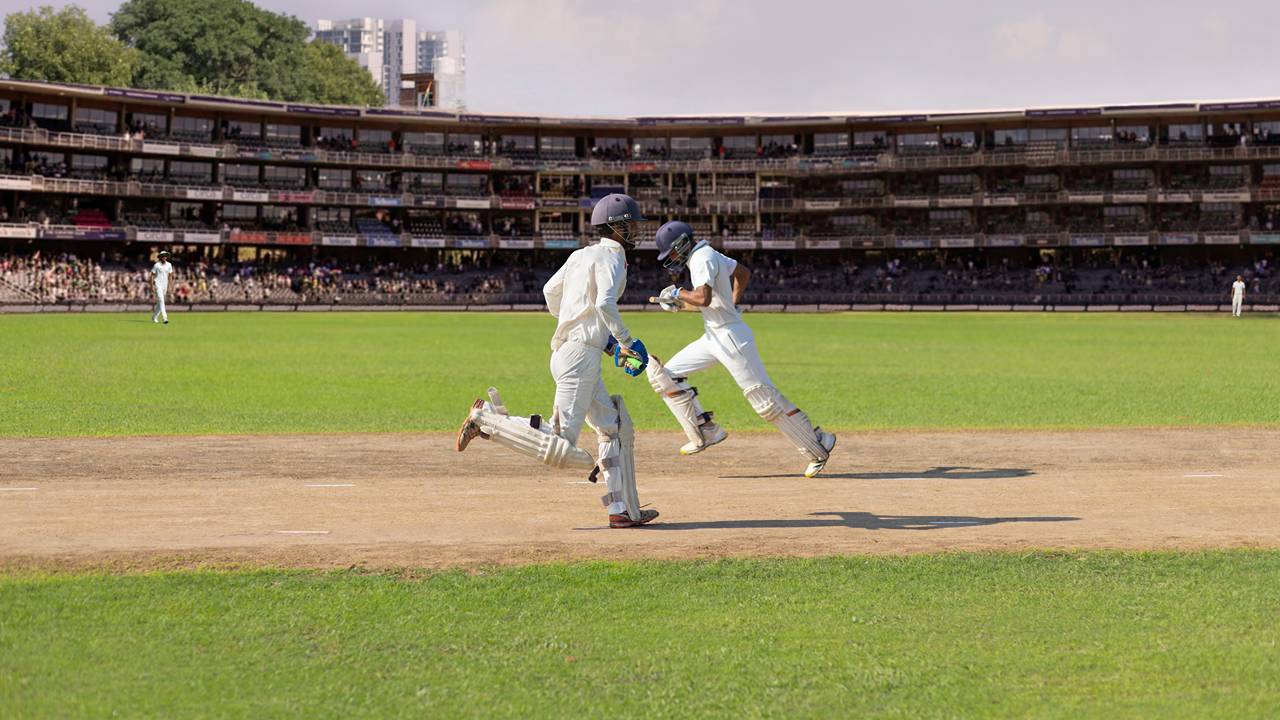Dr Boreham’s Crucible: A stroke-scanning player targeting unmet medical need and a massive market
EMVision says its portable scanning devices can offer life-saving clarity during the critical early treatment window for stroke victims. A massive market beckons.

Stockhead
Don't miss out on the headlines from Stockhead. Followed categories will be added to My News.
Despite the stunning advances in medical science – keyhole and robotic surgery and the like – the seemingly simpler challenges often remain unsolved.
One of them is the ability to determine whether a stroke is the most common ischemic form – a blockage – or haemorrhagic (a bleed).
The difference is not just academic, because treating haemorrhagic patients with anti-clotting drugs – the remedy for the more common ischemic strokes – can be fatal.
They will bleed out.
What’s more, time is critical in treating strokes, with the 60 minutes post-event dubbed the Golden Hour. First responders such as paramedics have their hands tied before the status of the stroke (or whether it’s a stroke at all) is clarified.
EMVision (ASX:EMV) seeks to change all of that with its portable imaging tool – dubbed Emu – and an even lighter variant called First Responder. The devices can diagnose a stroke (and what type) at the bedside in an emergency ward, in an ambulance, or at the scene of the mishap.
Having undertaken a number of trials already, EMVision can’t be accused of sticking its head in the sand on the extent of the problem.
About strokes
Strokes are the world’s second biggest killer, with 15 million cases a year (55,000 in Australia, or 150 per day).
Five million of these patients will die and one third will have a permanent disability.
As mentioned, the strokes need to be identified urgently.
Currently, the American Heart Association recommends rapid brain imaging, typically starting with a non-contrast computed tomography (NCCT) scan.
While NCCT scans are very good at ruling out haemorrhage, they are not so good with detecting acute ischemia.
CT (computed tomography), CT, angiogram, CT perfusion or magnetic resonance imaging (MRI) scans are often needed, but the gear required is bulky, expensive and needs specialist operators.
About Emvision
EMVision was formed in July 2017 by Scott Kirkland and Ryan Laws, to acquire the technology from the University of Queensland’s commercialisation arm, Uniquest.
Mr Kirkland held senior sales positions at San Francisco’s Quantcast, while Mr Laws has a history of investing in – and arranging funding for – emerging companies.
“After a career in sales and marketing, I was quite simply looking for an opportunity to create a bigger positive impact and healthcare felt like a pretty good place to start,” Mr Kirkland says.
The underlying algorithm and antenna technology were co-invented by the university’s professors Prof Amin Abbosh and Prof Stuart Crozier.
Initially, the inventors came up with portable scanner prototypes with versions for the skin, for the torso and for the brain.
But market research showed the greatest unmet clinical need and commercial opportunity was in point-of-care brain imaging, in particular acute stroke care.
EMVision listed in mid-December 2018, having raised $6 million at 25 cents apiece.
About the devices
Emu and First Responder won’t replace the current CT or MRI-based stroke imaging methods. As with most medical algorithms, they create high-contrast, supplementary images that are compared to the grey-ish pictures from MRI-CT scans.
The added clarity means that not only can new strokes be identified, but also damaged tissue around an old stroke site.
“We are also focused on providing better bedside monitoring for patients at risk of deterioration, including complications and perioperative stroke,” Mr Kirkland says.
The patients may be too unwell to be transported to the radiology department.
The size of a current medical cart, Emu weighs around 100 kilograms, compared with around 600 kilos for the current imaging kit.
Weighing in at a mere 10kg, the backpack-sized First Responder is designed for use by paramedics at the scene.
“Ambulances are notoriously strict on space; they joke they count every bandage,” Mr Kirkland says.
Based on electro-magnetic microwave imaging, the helmet-like devices can take an image and diagnose the type of stroke within five minutes.
The entire imaging process can be done on a laptop.
The devices have been simply designed to enable use by paramedics and bedside nurses.
EMVision has established a pilot production facility at its Macquarie Park HQ in western Sydney, capable of producing one Emu a week (with the ability to expand to four).
In the clinic
In late May, EMVision released results for the second stage of its multi-site, pre-validation trial of Emu, which in total covers the images of 240 suspected stroke victims.
These patients with stroke-like symptoms had presented to three high-volume emergency departments: Royal Melbourne Hospital, Brisbane’s Princess Alexandra Hospital and Sydney’s Liverpool Hospital.
“Highly promising” initial results from the 180 stage-two images showed the algorithm behind Emu was able to differentiate between haemorrhagic, ischemic and non-stroke events.
A readout from stage three, covering 30 haemorrhagic stroke patients, is expected in “coming months”.
The next step is a validation (pivotal) trial, aimed at supporting US Food and Drug Administration (FDA) approval under the de-novo (new device) route.
In collaboration with the Australian Stroke Alliance (ASA), Emvision plans to test First Responder on healthy volunteers, road ambulances and the Royal Flying Doctor Service.
It is also being trialled in mobile stroke ambulances - of which there are only 40 worldwide, disturbingly; of which one is in Australia, with a second allegedly on the way.
The path to market
In late September, the company was due to meet with the FDA to discuss the structure of a validation study to support the planned approval application.
Often attached to teaching hospitals, around 1,600 comprehensive and primary stroke centres service the highest volume of patients. They have a particular interest in neuro-monitoring, especially for intensive-care patients.
Then there are the about 1,300 critical access hospitals in small regional areas. At least 35 miles from any other hospital, these facilities have fewer than 25 inpatient beds but operate around-the-clock.
This definition is significant because the Centers for Medicare & Medicaid Services (CMS) confers them with financial benefits such as 101% reimbursement.
“To maintain accreditation, these small centres seek technology that is easy to use, does not require specialist operators and enables timely and efficient transfer of potential long-length-of-stay patients,” Mr Kirkland says.
Lo and behold, these include acute stroke patients.
The company plans a distribution deal in the US, but Mr Kirkland warns a tie up with a large player is “not a guaranteed recipe for success”.
Finances and performance
EMVision is doing well to tap non-dilutive funding from several sources.
The company claimed ‘revenue’ of $11.56 million for the year to June 2024, up 63 percent. But let’s call it ‘other income’ because the funds consisted of grants the Federal Research and Development Tax Incentives and some bank interest.
Of the $4.3 million of grant income, the company pocketed $1.8 million from the Australian Stroke Association’s Golden Hour project and just under $2.5 million from the Modern Manufacturing Medical Products Manufacturing Translation Stream Project.
Yep, it’s a mouthful – but money is money.
In February 2024, the company executed a $15.28 million placement at $2.05 a share to the New York-listed Keysight Technologies, a long-term strategic collaborator.
In January 2024, the company said it would receive $2.5 million of non-dilutive funding from the NSW Medical Devices Fund. The amount only becomes repayable when the company achieves $500,000 of underlying profit: in other words, well into commercialisation.
With clinical activity ramping up, EMVision’s expenses increased 40% to $12.19 million. But the Keysight raising means the company has a handy $18.6 million in the bank – enough to fund the validation trial.
EMVision shares have gained 30% over the last year, with the stock trading as low as $1.47 (December 12, 2023) and as high as $2.68 (March 25, 2024).
The shares peaked at $4 in November 2020, not long after troughing at 50 cents in March that year (at the onset of the pandemic).
Sizin’ the rivals
No fewer than five ASX-listed companies are involved in stroke detection or treatment.
EMVision’s nearest ASX device comparator is Micro-X, which is also developing a portable (x-ray based) stroke detector for frontline use.
Micro-X is not a pure-play stroke exposure because it is also applying its tech to bomb disposal and airport baggage screening.
Speaking generally, Mr Kirkland says rival devices do not emulate EMVision’s wares in terms of usability, portability and cost effectiveness.
“We are the only late development-stage, well-funded organisation building a compelling body of clinical evidence in the ultra-high frequency radio signal sensing and imaging space,” he says.
In contrast, most ‘rivals’ aim to make existing CT or MRI machines smaller and are not focusing on stroke diagnosis, per-se.
Yes, there’s an AI angle
“Without the advances in widely available and low-cost computing power that we see today, our work would have been incredibly challenging just 10 years ago,” Mr Kirkland says.
The company used high-performance computing to design the software and the algorithms.
“Within the product, we use artificial intelligence … to interpret complex signal interactions and derive a neuro-diagnostic output,” Mr Kirkland says.
“That is: blood or not, clot or not.”
Dr Boreham’s diagnosis
Let’s run through the numbers on EMVision’s addressable market.
Assuming one Emu device per stroke ward, intensive care unit and emergency department, that adds up to an addressable market of 10,200 units in the US.
“Outside of the US, we believe the global addressable is around 92,000 ,” Mr Kirkland says.
The company expects Emu to sell for US$150,000 ($A225,000), with attached service contracts and consumables of a further US$25 per patient.
The First Responder pricing has not been decided, but the consumables are expected to be around US$50 per patient.
There are about 60,000 road ambulances and 1,000 air ambulances in the US, with around 120,000 across the Western world.
“Our view is this could go in every ambulance, as with a defibrillator or ECG but you start with a portion of a fleet, do reference studies and build out,” Mr Kirkland says.
So, all of that adds up to … a lot of dollars.
But a potential larger opportunity is for quick diagnosis of traumatic brain injury (TBI), an even bigger market than stroke with 50 million to 60 million cases a year (26 million of them medically treated).
Mr Kirkland says EMVision is targeting market entry late next year, depending on the progress of the validation trial and the de novo submission.
This timing sounds ambitious, but there’s no denying the size of the market and the unmet medical need. And like the avian representative on Australia’s coat of arms there’s only one way to go and that’s forward.
“Both Emu and First Responder are potential multi-billion-dollar markets,” Mr Kirkland says.
“The key of course is where do you start?”
EMVision at a glance
ASX code: EMV
Share price: $2.12
Shares on issue: 85,424,884
Market cap: $181.3 million
Chief executive officer: Scott Kirkland
Board: John Keep (chair), Mr Kirkland, Geoff Pocock, Tony Keane, Dr Phillip Dubois, Patryk Kania
Financials (year to June 30, 2024) revenue nil, loss of $2.7 million ($3.9 million deficit previously), cash balance $18.6 million (up 88%)
Identifiable major shareholders: Keysight Technologies Inc 8.7%, Scott Kirkland 5.0%, Ryan Laws 3.72%, Paul and Angelique Brown 1.7%
Disclosure: Dr Boreham is not a qualified medical practitioner and does not possess a doctorate of any sort. He usually doesn’t know where to start – beginning with getting out of bed in the morning.
This column first appeared in Biotech Daily
Originally published as Dr Boreham’s Crucible: A stroke-scanning player targeting unmet medical need and a massive market



